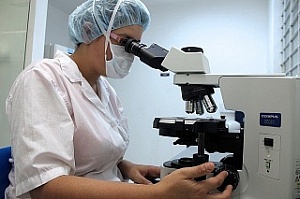A research group that includes staff of Tomsk, Saratov, and Moscow State Universities, and the University at Albany (State University of New York, USA), has begun to develop three new approaches to noninvasive diagnostics of viral and bacterial infections. The main tools in the new technologies will be methods of optical spectroscopy and machine learning that are innovative approaches and will reduce the time required to identify pathogens from a few days to a few minutes, potentially increasing the speed of diagnosis 100 times.
- The new diagnostic methods will investigate exhaled air, biological fluids, in particular, saliva, and biological tissues (the epithelial layer of the oral cavity), - explains Yuri Kistenev, one of the project executors, head of the TSU Laboratory of Biophotonics, executive director of the TSU Institute of Biomedicine. - In each case, when pathogens are introduced into the body, changes in the molecular composition occur in the cells of biological tissues and gas and liquid samples of biological origin. Our task is to identify these molecular biomarkers for various viruses and bacteria and, using artificial intelligence methods, teach computer models to recognize the pathogen.
As the developers note, saliva and the mucous surface of the oral cavity were not chosen by chance as objects of study. In most cases, for example, when infected with influenza, rotaviruses, Covid-19, and many other infections, it is the epithelium of the mouth and nose that is affected first. And it is potentially possible to see their reaction to the pathogen already at the initial stage of the disease, when antibodies are still absent in the patient's blood.
Methods such as terahertz and infrared Raman spectroscopy and absorption spectroscopy will be used to read the required information. These methods help to obtain a large amount of information about an object, including its chemical composition.
Clinicians will be working alongside scientists to find biomarkers that indicate the presence of a particular pathogen and create a library for machine learning. After the database of patterns is collected, a computer model using the pattern recognition method will be taught to distinguish between pathology and the norm and to verify pathogens. As test models, scientists will use pathogens of seasonal SARS, for example, rotaviruses and influenza virus.

